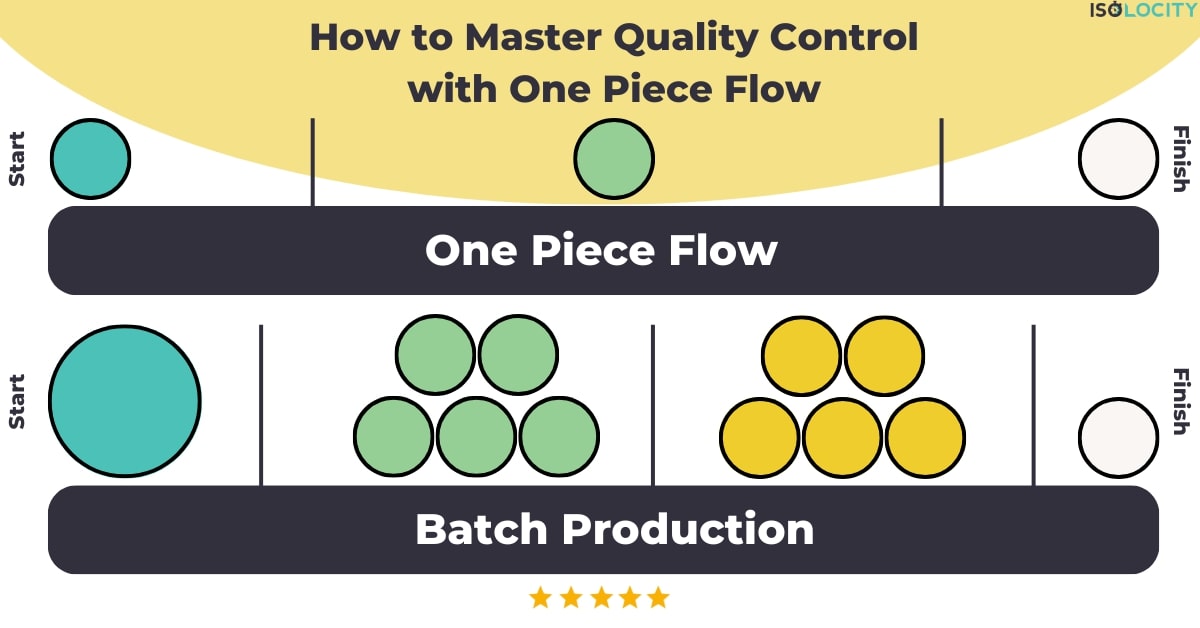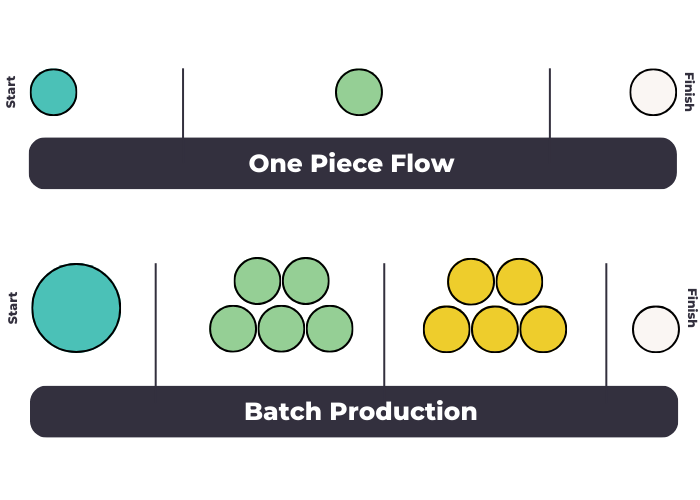Today, we’ll discuss One Piece Flow and its remarkable interaction with cellular layout and discrete procedures. We’ll see why this quality control technique is revolutionary.
What is One Piece Flow:
Creating items one at a time using One Piece Flow is like a choreographed dance. Picture a bakery where cookies are baked individually to perfection before moving on. This method optimizes production and increases efficiency when combined with cellular layout and discrete operations.
Not fond of reading? Watch this video then.
What Separates Batch Production from One Piece Flow:
Batch production traditionally produces big amounts in one cycle. This strategy causes high inventory and defect risk. One Piece Flow, when combined with cellular layout and discrete operations, produces products continuously, decreasing waste and allowing real-time problem detection and correction. Each product receives unique attention thanks to the discrete flow of work, which enables strict quality control.
One Piece Flow, Cellular Layout, and Discrete Workflows:
When paired with cellular layout and discrete operations, One Piece Flow can improve manufacturing.
Efficient Resource Utilization:
The cellular layout divides workstations into independent groups, assigning duties to each. Consequently, this method streamlines production and optimizes resource use. Furthermore, individual items are produced with One Piece Flow, aligning seamlessly with these self-contained modules. Consequently, synchronization reduces resource waste and boosts efficiency.
Additionally, One Piece Flow’s cellular layout and separate workflows not only reduce inventory and overproduction but also minimize waste. This approach enables real-time quality control, ensuring a continuous improvement process. In addition, by thoroughly scrutinizing each product through discrete work, there is a guaranteed decrease in flaws and a significant improvement in output quality.
Flexibility and adaptability:
These tactics increase flexibility. Manufacturers can quickly change production plans, reallocate resources, and meet shifting demands. This flexibility allows production to meet market demands while preserving quality.
Focusing on one item at a time in cellular layout and distinct workflows improves team communication. Employees can quickly recognize problems, discuss solutions, and improve. Simplified communication improves collaboration and fosters ongoing progress.
Advantages of this Combined Quality Control Strategy:
Proactive Measures:
Inspecting each piece individually allows for early flaw detection. Consequently, we can quickly identify and resolve issues to prevent escalation. By adopting this proactive strategy, complete production process integrity is ensured, leading to consistently high-quality output.
Efficient Problem Solving:
Furthermore, One Piece Flow enables speedy problem identification and solutions. Consequently, teams can promptly address issues in real-time. This adaptability keeps quality control robust and responsive to changing problems, thereby significantly improving processes.
Consistent Quality:
Quality is defined by consistency. Uniform production using One Piece Flow builds customer trust and happiness. Consistent quality boosts brand reputation and customer loyalty for long-term success.
Some drawbacks of One Piece Flow:
Initial Setup Challenges:
One Piece Flow, cellular layout, and discrete operations may necessitate major manufacturing line layout adjustments. Planning and coordination are needed to overcome initial setup issues.
Training:
Skilled labour is needed to efficiently handle individual components in this strategy. Proper training helps workers understand the process, ensuring smooth operations and high-quality products.
Feasibility:
Some sophisticated production processes may not fit this combination strategy. To maintain quality standards and balance efficiency and product complexity, businesses should explore other approaches.
Conclusion:
In the amalgamation of One Piece Flow, cellular layout, and discrete operations, manufacturing finds its future. This synergy offers efficient resource utilization, real-time quality control, and unmatched adaptability. Challenges exist, but the benefits far outweigh them. Embracing this innovative approach isn’t just a choice; it’s a necessity for any industry striving for excellence in quality, efficiency, and customer satisfaction.
If you need any help with respect to your quality management system, feel free to reach out to us. Isolocity is one of the highest-rated QMS in the world. Check some of the recent reviews we have received on Capterra.





